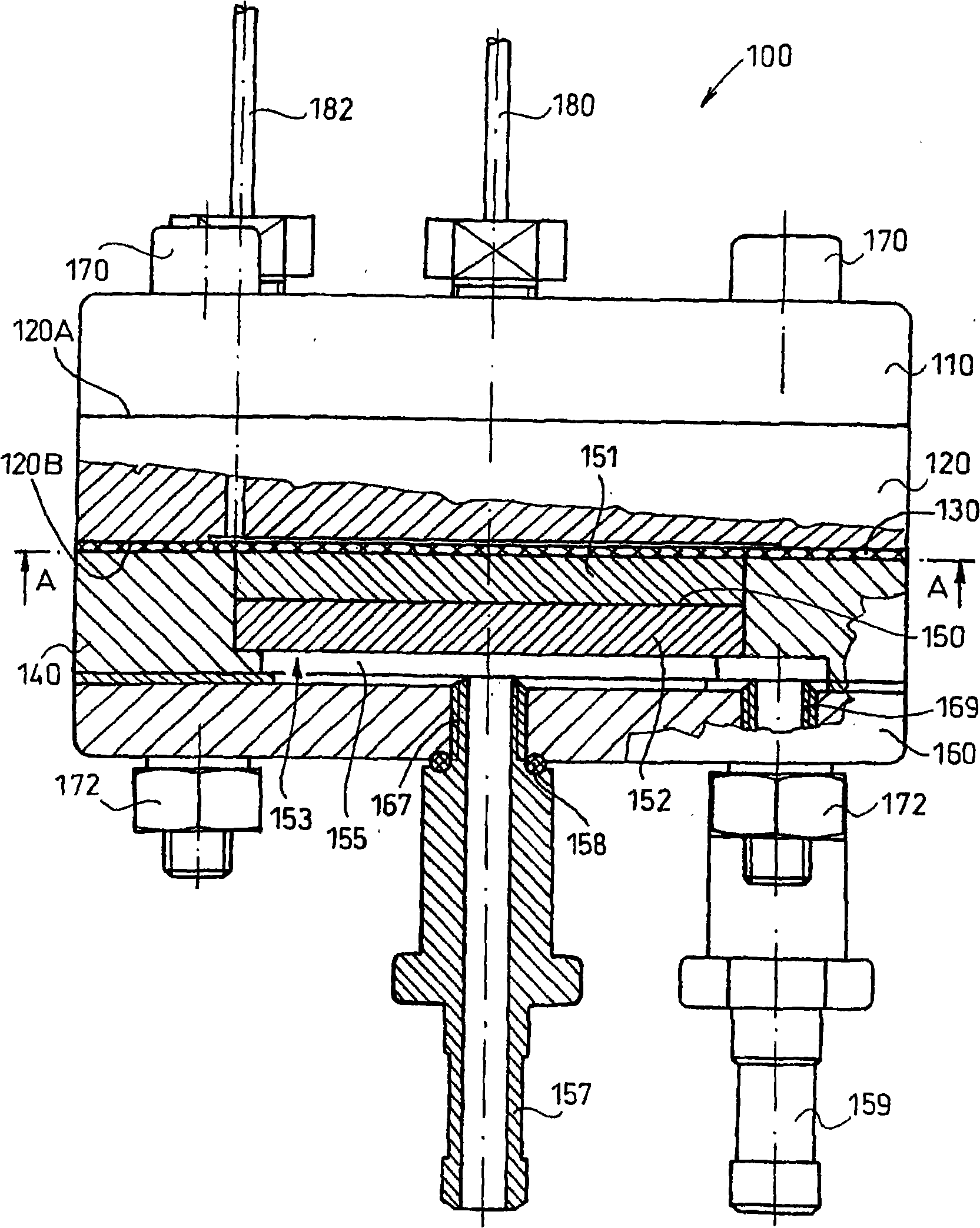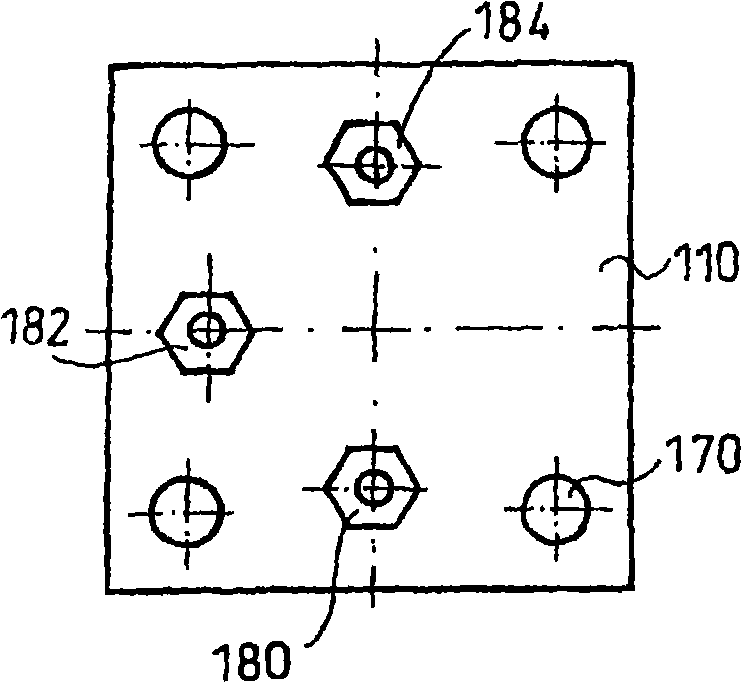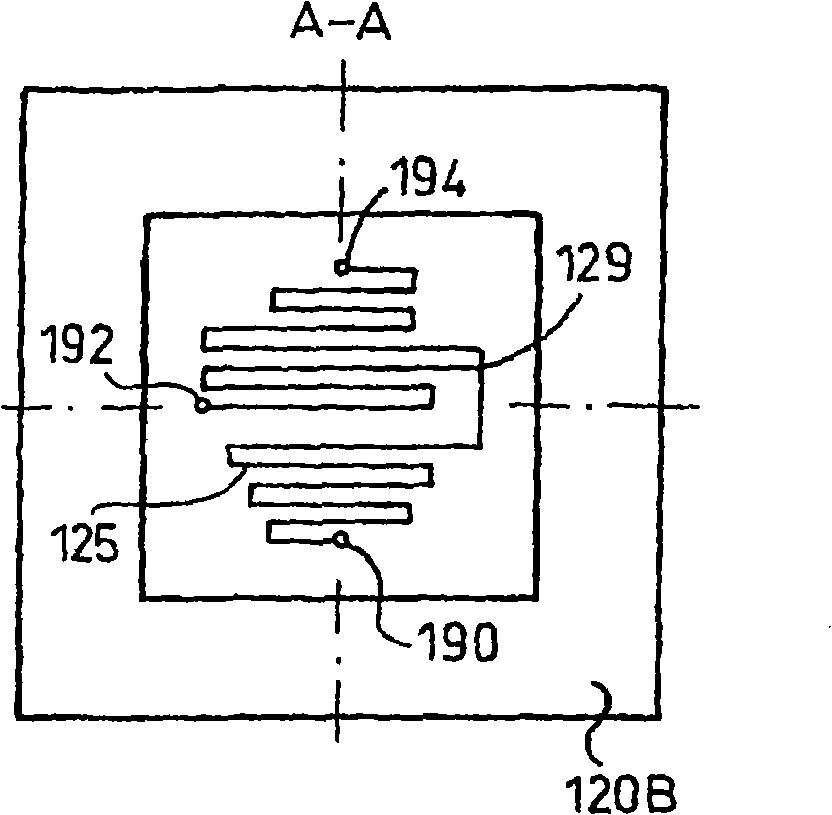Method of forming a sealed channel of a microfluidic reactor and a microfluidic reactor comprising such channel
A technology for sealing channels and reactors, applied in the direction of microstructure technology, microstructure devices, manufacturing microstructure devices, etc., can solve the problems of uneven channel walls, time-consuming, complicated disassembly, etc.
- Summary
- Abstract
- Description
- Claims
- Application Information
AI Technical Summary
Problems solved by technology
Method used
Image
Examples
Embodiment Construction
[0021] figure 1 Shown is a microfluidic reactor 100 comprising a reactor module 120 defined by a first face 120A and a second face 120B, a first confinement 110 in contact with the first face 120A of the reactor module 120, covering the reaction The closure 130 on the second face 120B of the device module 120 , the support 140 in contact with the closure 130 along its periphery, and the second limiter 160 abutting against the face of the support 140 opposite to the closure 130 . The closure member 130, the support member 140 and the restriction member 160 together define a cooling cavity 153 therebetween. A temperature control unit 150 in contact with the enclosure 130 is installed in the cooling cavity 153 . The temperature control unit 150 is securely mounted in place by the support 140 . In this arrangement, the temperature control unit 150 is separated from the second restriction member 160 by a gap, that is, the temperature control unit 150 and the second restriction me...
PUM
| Property | Measurement | Unit |
|---|---|---|
| Thickness | aaaaa | aaaaa |
Abstract
Description
Claims
Application Information
 Login to View More
Login to View More - R&D
- Intellectual Property
- Life Sciences
- Materials
- Tech Scout
- Unparalleled Data Quality
- Higher Quality Content
- 60% Fewer Hallucinations
Browse by: Latest US Patents, China's latest patents, Technical Efficacy Thesaurus, Application Domain, Technology Topic, Popular Technical Reports.
© 2025 PatSnap. All rights reserved.Legal|Privacy policy|Modern Slavery Act Transparency Statement|Sitemap|About US| Contact US: help@patsnap.com



